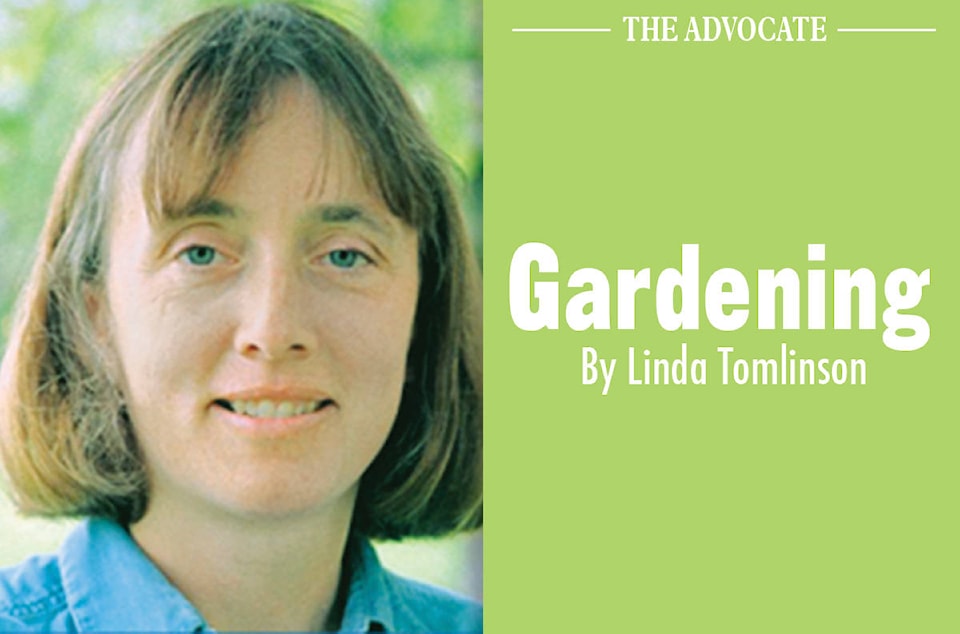When the ground slowly starts to freeze it is time to put the garden to bed for winter. This includes watering in this year’s plantings and evergreens as well as covering tender plants.
A wet September increased the moisture table but extra water in the root zone will give new plantings, and small evergreens extra water making overwintering easier. It takes time for transplanted plants to spread their roots into the soil that surrounds the original hole. The smaller root systems results in the plants inability to gather moisture from larger areas.
Placing a seeping hose in the outer area of their roots will allow the plant to intake as much moisture as needed while encouraging them to send roots outwards. It will also ensure that the area around the plant freezes and stays frozen throughout the winter.
Evergreen plants continue to transpire or give off moisture year round. Large Spruce and pine trees with deep vast root systems can take up moisture for 10 to 11 months of the year leaving them with a short window where they are not replacing the moisture that is transpired. During this time of year, days are often short and cold which also limits the process. Smaller evergreens have a smaller root structure that rarely accesses water after the ground freezes. Watering areas around cedars and junipers in the fall increases the plants moisture reserves of the soil as well as the plant. The plants must have access to enough moisture in the soil, or roots will become dry. By spring, areas that are a dull green will turn brown.
Letting water trickle in the ground around evergreens in the fall will increase moisture levels. This is especially important for plants that are growing in a sunny location. Place the hose end away from the truck, at the outside edge of the plant where the feeder roots are located.
Snow is nature’s insulator but it isn’t always available. In years where snow cover is not guaranteed it is best to mulch in tender plants. Mulches that are readily available and economical in central Alberta are; straw, peatmoss and leaves.
Straw is a commodity that depends on the local crops. The early snowfall that covered crops either standing or lying in the fields has made this resource scarcer than normal. The usual advantage of using straw because it is readily available may not apply this year but it is light weight and easy to spread
Straw, depending where it is grown, comes with some weed seeds. The harvesting equipment removes the majority of the grain heads but some viable seeds will be left behind. On the plus side, grain is easy to pull and can be placed in the compost.
Peatmoss is available for purchase in most garden centre and greenhouse outlets packaged in large compressed bales. Once the package is opened, it fluffs to a much larger size. It is light and easy to spread.
Peatmoss can be pricy but it is weed free and can be worked into the soil in the spring.
Leaves are free for the raking in many yards. Gather them on a tarp when they are dry and pull them to the desired area and flip the tarp to empty it. Wet leaves will pack tighter and can harbour molds and fungi.
Be careful when bringing in leaves from other yards as you could be unwittingly introducing new insects and diseases that are overwintering in the leaves to your yard.
All the mulches are light weight and can be blown away in a windy area. Sprinkling the top of the mulch with water will help it freeze down. Another alternative is to place a few branches on top.
When putting mulch on the plants jiggle the plants to insure that the mulch is between all the branches and there are not large air holes under the top layer. Expect the mulch to shrink and settle. It may require another layer before the snow falls.
Larger plants can be mulched in by pacing a frame around them. It can be as simple as a cardboard box, burlap and stakes or a winter plant cover bought at the local plant centre. These items are then filled with a mulch.
All covers used to hold mulch in place must allow air to circulate or mold and fungi will be a problem.
The majority of plants grown in local gardens survive with little fall care but to those that enjoy being outside in the fall watering and mulching does make it easier for plants to transition through the seasons.
Linda Tomlinson is a horticulturalist that lives near Rocky Mountain House. She can be reached at your_garden@hotmail.com
